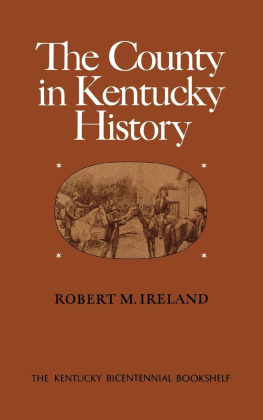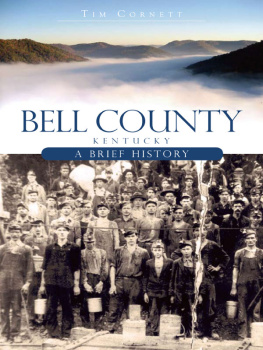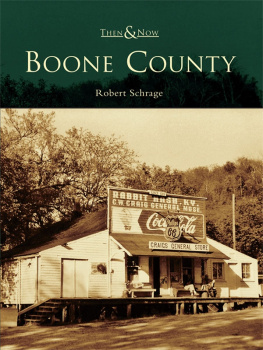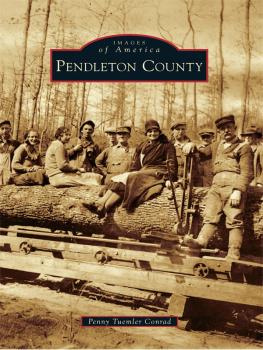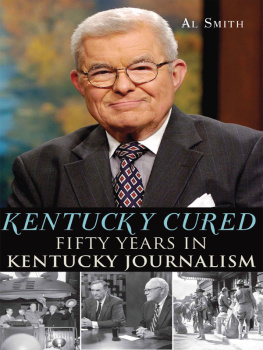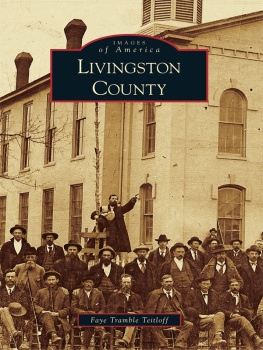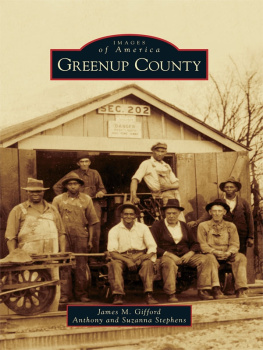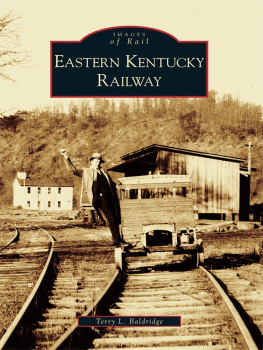The Kentucky Bicentennial Bookshelf
Sponsored by
KENTUCKY HISTORICAL EVENTS CELEBRATION COMMISSION
KENTUCKY FEDERATION OF WOMENS CLUBS
and Contributing Sponsors
AMERICAN FEDERAL SAVINGS & LOAN ASSOCIATION
ARMCO STEEL CORPORATION, ASHLAND WORKS
A. ARNOLD & SON TRANSFER & STORAGE CO., INC. / ASHLAND OIL, INC.
BAILEY MINING COMPANY, BYPRO, KENTUCKY / BEGLEY DRUG COMPANY
J. WINSTON COLEMAN, JR. / CONVENIENT INDUSTRIES OF AMERICA, INC.
IN MEMORY OF MR. AND MRS. J. SHERMAN COOPER BY THEIR CHILDREN
CORNING GLASS WORKS FOUNDATION / MRS. CLORA CORRELL
THE COURIER-JOURNAL AND THE LOUISVILLE TIMES
COVINGTON TRUST & BANKING COMPANY
MR. AND MRS. GEORGE P. CROUNSE / GEORGE E. EVANS, JR.
FARMERS BANK & CAPITAL TRUST COMPANY / FISHER-PRICE TOYS, MURRAY
MARY PAULINE FOX, M.D., IN HONOR OF CHLOE GIFFORD
MARY A. HALL, M.D., IN HONOR OF PAT LEE,
JANICE HALL & MARY ANN FAULKNER
OSCAR HORNSBY INC. / OFFICE PRODUCTS DIVISION IBM CORPORATION
JERRYS RESTAURANTS / ROBERT B. JEWELL
LEE S. JONES / KENTUCKIANA GIRL SCOUT COUNCIL
KENTUCKY BANKERS ASSOCIATION / KENTUCKY COAL ASSOCIATION, INC.
THE KENTUCKY JOCKEY CLUB, INC. / THE LEXINGTON WOMANS CLUB
LINCOLN INCOME LIFE INSURANCE COMPANY
LORILLARD A DIVISION OF LOEWS THEATRES, INC.
METROPOLITAN WOMANS CLUB OF LEXINGTON / BETTY HAGGIN MOLLOY
MUTUAL FEDERAL SAVINGS & LOAN ASSOCIATION
NATIONAL INDUSTRIES, INC. / RAND MCNALLY & COMPANY
PHILIP MORRIS, INCORPORATED / MRS. VICTOR SAMS
SHELL OIL COMPANY, LOUISVILLE
SOUTH CENTRAL BELL TELEPHONE COMPANY
SOUTHERN BELLE DAIRY CO. INC.
STANDARD OIL COMPANY (KENTUCKY)
STANDARD PRINTING CO., H. M. KESSLER, PRESIDENT
STATE BANK & TRUST COMPANY, RICHMOND
THOMAS INDUSTRIES INC. / TIP TOP COAL CO., INC.
MARY L. WISS, M.D. / YOUNGER WOMANS CLUB OF ST. MATTHEWS
The County
in Kentucky
History
ROBERT M. IRELAND
Research for The Kentucky Bicentennial Bookshelf is assisted by
a grant from the National Endowment for the Humanities. Views
expressed in the Bookshelf do not necessarily represent those of the
Endowment.
Copyright 1976 by The University Press of Kentucky
Paperback edition 2009
The University Press of Kentucky
Scholarly publisher for the Commonwealth,
serving Bellarmine University, Berea College, Centre
College of Kentucky, Eastern Kentucky University,
The Filson Historical Society, Georgetown College,
Kentucky Historical Society, Kentucky State University,
Morehead State University, Murray State University,
Northern Kentucky University, Transylvania University,
University of Kentucky, University of Louisville,
and Western Kentucky University.
All rights reserved.
Editorial and Sales Offices: The University Press of Kentucky
663 South Limestone Street, Lexington, Kentucky 40508-4008
www.kentuckypress.com
Cataloging-in-Publication Data is available from
the Library of Congress.
ISBN 978-0-8131-9283-3 (pbk: acid-free paper)
This book is printed on acid-free recycled paper meeting
the requirements of the American National Standard
for Permanence in Paper for Printed Library Materials.
Manufactured in the United States of America.
| Member of the Association of
American University Presses |
Contents
Preface
NINETEENTH-CENTURY Kentucky in many ways resembled medieval Germany, which was essentially a loose collection of miniature states, duchies, principalities, and other constitutional subdivisions and only in the loosest sense a political unit. Although Kentucky certainly possessed stronger bonds of central control, her essential governmental functions were in many ways conducted not from Frankfort but from the seats of her multitudinous counties (numbering 119 by 1886). Often the county rather than the state or national government controlled the destinies of Kentuckians, regulating their affairs from apprenticeship to probate. County officials likewise mimicked medieval bureaucrats, often assuming a proprietary attachment to their offices.
By 1900, Kentucky led the country in the production of race horses and whiskey and placed near the top in tobacco, coal, and counties. Counties served well the passions of Kentuckians for individualism, local control, economic gain, and, above all, political power. The full story of Kentucky cannot be understood without an appreciation of the place of the county in her past.
Many people contributed to this book. In particular, I wish to thank Dr. Steve Channing, Dr. Thomas D. Clark, Mr. Paul Willis, Mr. Sandy Gilchrist, and Dr. Jacqueline Bull. Above all I want to thank my three children, Suzy, Julie, and Betsy, for keeping biting and fighting to a minimum during the period of my writing. To them I affectionately dedicate this book.
THE STAKES OF POWER
KENTUCKIANS HAVE ALWAYS taken great pride in their counties. This was especially true before 1900 when most Kentuckians lived on farms or in rural towns and villages and owed their greatest allegiance to local institutions such as family, church, political party, and state and local government. For most, Washington, D.C., remained a distant capital and the nation a remote loyalty even after the Civil War. In an age of relative immobility, home had a more permanent and meaningful hold on the hearts and minds of Kentuckians. And for most Kentuckians, home meant ones county rather than his town or village.
Kentuckys preoccupation with counties was natural to the child of a parent so concerned with the invention and perfection of these local institutions. More than most colonies, Virginia had depended upon counties for her government, delegating to these entities the principal responsibility for tax assessment and collection, law enforcement, military training, and many of the other fundamental devices of social control. After a period of turmoil approaching rebellion, the leaders of Virginias counties had become the leaders of the colony. To be a county squire in seventeenth- and eighteenth-century Virginia was to be at the top of the social and political ladder.
Kentucky, once the westernmost county of Virginia, assumed the traditions of local government from that colony. Early in her statehood, Kentucky displayed a particular predilection for the art of county-making which did not abate as the decades passed. By the end of the nineteenth century, Kentuckians had created 119 counties, adding still another in the early twentieth century. Originally intended to be but subdivisions of the state and, as such, her agents in local affairs, most of Kentuckys counties had become semiautonomous by the mid-nineteenth century, deriving a fierce loyalty from their residents. Rivalries between counties could be as intense as those between states.

